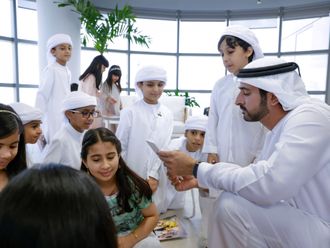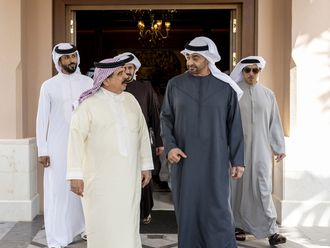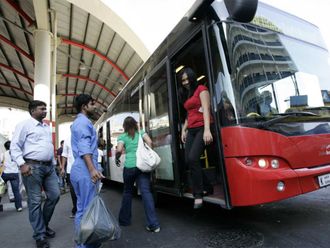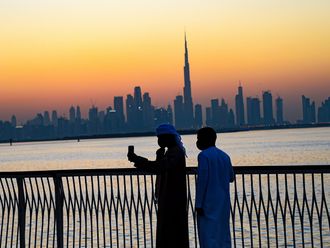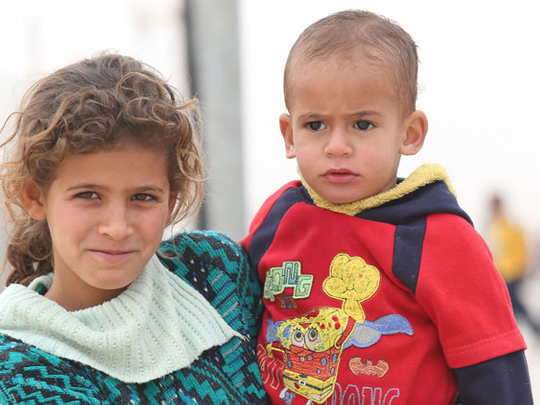
Lebanon: While other girls of her age are carrying stylish Barbie dolls, this nine-year-old Syrian girl is trying to carry her sick three year-old twin brothers.
The girl won’t give her name, to protect the safety of any relatives still trapped in Syria.
Her room is small, and is getting even smaller because two other families are sharing it — sub-dividing it with curtains to create the illusion of privacy. Yet she takes pride in sweeping her third of the room. At least this room gives the girl a front-row seat to watch other families, and remember the days when her own mother would tuck her into bed.
The girl wonders how long she can keep dodging her brothers’ questions about where their parents are. She doesn’t want them to know that she herself doesn’t know.
After her father disappeared, her mother went to look for him and neither returned. Back in Syria she was top of her class, but now her education has been postponed until she can be registered.
Her Lebanese neighbours are sympathetic: “When the world hears that over 1.6 million Syrians are now refugees, it may seem like just another statistic. But these children are ‘walking statistics’. These are the kind of scenes the world doesn’t see after the cameras leave. We don’t know how long they will be refugees for, but while we’re waiting for something to happen, life happens.”
The crisis now has the unwanted world record of being the biggest humanitarian appeal in human history — with $5 billion (Dh18.364 billion) needed for food, medication, education, shelter and much more.
In the absence of a mother, the girl now has a role model to look up to, Shaikha Jawaher Bint Mohammad Al Qasimi, UNHCR Eminent Advocate for Refugee Children, who has visited these Syrian refugees and launched the “Big Heart for Syrian refugee children” campaign.
The girl is still traumatised by the ordeal of their escape into Lebanon, and how they sometimes had to crawl on their bellies on the sharp stones to dodge the bullets whistling past overhead.
When she walks, she cannot break the habit of putting her feet only where she can see someone else’s footprint — a psychological scar from when she walked through deadly fields of land mines to cross the border.
This girl is just one of 7,000 Syrians who flee their homeland each day — three out of four of them being women and children. Her brothers were already refugees when their first birthday came; so at this point they have spent more time in Lebanon than in their own country. If, by some miracle, they are ever reunited with their parents, these boys wouldn’t even recognise their own mother.
Now that her brothers are sick, she takes them to a hospital, waiting with pregnant mothers in the sweltering heat. The staff tries their best, but healthcare is complicated as these children are “undocumented persons” with no identity and no country.
Her biggest fear is that her brothers will grow up thinking it is normal to live without knowing where your next meal will come from, or living with only the clothes on your back, or playing with bricks because you can’t afford toy cars, or having the background noise of bombardment as a bedtime lullaby.
But their innocent laughter gives her hope. And where there’s hope, there’s life.
After seeing neighbours turn against each other in her native Syria, it’s a relief for her to be among Lebanese neighbours who treat her as one of them. If only the rest of the world could follow in these footsteps.


